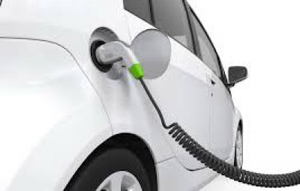Missing pieces, unstable policy makes faster EV adoption a bumpy ride
A sudden reduction in the Central government subsidies, penalties for non-compliance with the subsidy norms, uncertainty about continuation of the subsidies post March 2024 and the absence of a stable government policy on EVs are the critical concerns of the Indian electric vehicle (EV) players, said industry experts.
They said there are many missing pieces — like the charging infrastructure, localisation of critical components, high total cost of ownership of EVs and import dependence — that need to be filled for the sector’s steady growth.
There are also emerging views arguing that holistically speaking the EVs are not environmentally friendly as it is made out to be since there are challenges in the disposal of batteries, emissions due to mining of lithium-ion and increased power generation for charging the vehicle batteries.
“The stability of the Central government’s policy for the EV sector remains a critical concern. While appreciating recent strides in promoting electric vehicles, uncertainties persist regarding long-term incentives, infrastructure development, and regulatory frameworks,” Ayush Lohia, CEO, Lohia Auto Industries Ltd, told IANS.
The company rolls out electric two and three wheelers.
“A consistent and clear policy direction is essential to foster investor confidence, spur innovation, and ensure sustainable growth. A collaborative approach between the government and industry stakeholders is crucial for navigating challenges and realising the full potential of the electric vehicle sector in the years ahead,” Lohia added.
In 2023, sales growth of electric two wheelers dipped after the Central government reduced the subsidy by amending its Faster Adoption and Manufacturing of Electric Vehicles II (FAME II) scheme as several manufacturers made undue gains.
As things stand, the Central government will scrap the FAME scheme in March 2024.
“FAME subsidy scrapping would be near term hiccups for industry, which could be partly be negated by implementation of the production linked incentive (PLI) scheme, falling cost of EV production and the vehicle makers launching low/mid range vehicles to lower the total cost of ownership. Larger companies who would benefit from PLI should do better,” Mumuksh Mandlesha, Research Analyst, Anand Rathi Institutional Equities, told IANS.
“The discontinuation of the FAME subsidy for two-wheelers next year will likely pose challenges for the electric vehicle industry. This policy shift could impact companies heavily dependent on subsidies for competitiveness. We foresee the need to recalibrate our pricing strategy, enhance operational efficiency, and intensify marketing efforts to maintain market share,” Lohia said.
Government subsidies are not needed when 20-25 per cent of the total new vehicle sales are accounted for by EVs. By that time the supply chain would have been established and the economy of scale will bring down prices. By encouraging a battery swapping policy the cost of the electric vehicle will be cheaper and the adaptation can happen much faster, Lohia added.
However, on the whole the government has very good schemes like low 5% GST, FAME/state subsidy and PLI scheme towards EVs. The EV penetration will continue to improve over the medium to long term due to the government thrust and strong global investments in EV technologies, remarked Mandlesha.
“One of the challenges for the consumers is the lack of wider choice of vehicles, especially in the four wheeler EVs. This can make it difficult for consumers to find the right EV for their needs. In addition, the cost of batteries is a major factor in the price of EVs. As battery prices continue to fall, EVs will become more affordable and accessible to Indian consumers,” H.S. Bhatia, Managing Director, Kelwon Electronics & Appliances (South Korean Daewoo’s licensee partner in India).
Kelwon Electronics plans to make e-bikes and other products with technology from Daewoo.
Bhatia said as the battery prices continue to fall, EVs will become more affordable and accessible to Indian consumers. With continued government support, growing market demand, and expanding infrastructure, India can achieve its target of 30% EV penetration by 2030.
But isn’t India shifting its import dependence from the Middle East (oil) to China – lithium ion and rare earth materials? Can it achieve self sufficiency with regard to the EVs?
“India has been weak in the mining industry and that would remain a challenge in future,” said Mandlesha.
According to Bhatia, achieving self-sufficiency in lithium-ion and rare earth materials will require a concerted effort from the government, industry, and academia.
“By implementing a comprehensive strategy such as Exploration, R&D, Processing, Manufacturing, and Recycling, India can reduce its import dependence and secure a sustainable supply chain for its EV industry,” Bhatia said.

